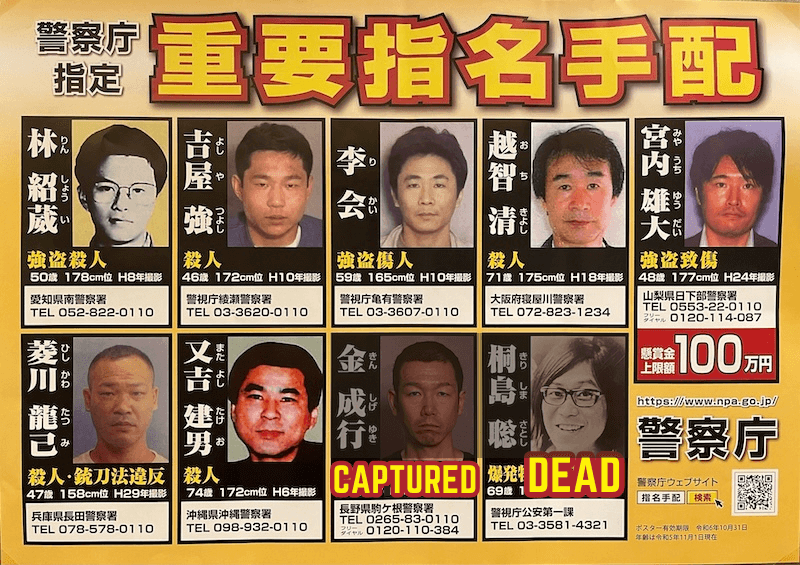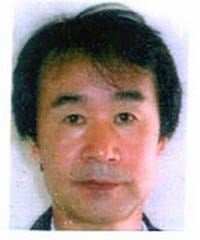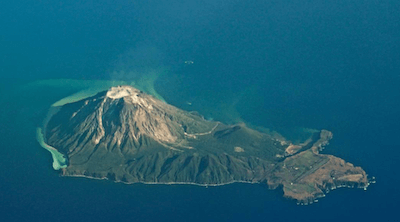This is Japan’s Most Wanted List — which was unchanged for years until early 2024, when Satoshi Kirishima, whose smiling visage had stared out from thousands of wanted posters across the nation, was discovered deathly ill in hospital.
Days later his death led every news show in Japan, explaining how, despite his groovy good looks, he had taken part in The Mitsubishi Massacre, a horrific bombing that killed eight people.
Kirishima’s death also turned out to be bad luck for Shigeyuki Kin, on the run after throwing shots at a fellow gang member, because his photo was directly next to Kirishima’s on those wanted posters — and with the blizzard of publicity he only lasted a couple more weeks until someone gave him up and he was arrested.
But what of the other 7 members of this rogues’ gallery, all still on the hoof as of this edition? Well, today we’re going to start to tell some of their stories — men we’ll call The Ripper, The Gambler and, most poignant of all, The Biker.
Let’s jump into it:
ROGUES’ GALLERY
“THE RIPPER”
Name: Kiyoshi Ochi
DOB: April 6, 1952 (72 years old as of 2024)
Height: 175cm
Distinguishing features: bad skin
Wanted for: MURDER, DISMEMBERMENT1
Wife’s body never found; escaped to isolated island and disappeared
On March 1, 2006, a sign appeared in the window of the Osaka pharmacy run by Eiko Oichi, saying that the establishment would be closed for a week due to a family tragedy.
There had indeed been a family tragedy — Eiko had been murdered, allegedly, by her husband Kiyoshi.
In the week in which the pharmacy stood closed, Kiyoshi was busily disposing of his wife’s belongings at pawn shops for ready cash.
Then he told friends he was going on an overseas trip, then disappeared.
Once suspicion was aroused, the police searched the Ochi family home. Nothing seemed amiss — until they broke out the luminol and found pints upon pints of blood had been scrubbed off the bathroom floor, walls and ceiling.
Kuchinoerabu Island. Image: Google
Money troubles, it seems, had caused a rift in the marriage — and Kiyoshi was now on the run.
Police tracked him to Kuchinoerabu Island, Kagoshima Prefecture, an isolated island with a population of only 150 people, which can only be reached by a once daily ferry.
A terrible place, in other words, to hide out.
A group of 10 cops headed to Kuchinoerabu and began questioning the islanders, who quickly explained that, yes, Kiyoshi Ochi had been hanging around, but also that he had started giving away his possessions, such as his watch, to residents.
He had last been seen striding off towards the mountains, lightly dressed for the weather.
As of 2024, that sighting was 18 years ago.
Eiko Ochi’s body has never been found.
“THE GAMBLER”
Name: Lin Shoui
DOB: March 27, 1973 (51 years old as of 2024)
Height: 178cm
Wanted for: MURDER
Pachinko Cheat Stabs Employee Who Caught Him
Lin Shoui had a nice little racket going.
He and a fellow Chinese student covered their party expenses in Japan by rigging pachinko slot machines.
October 1 1999, evening, they put their usual scam into action at the pachinko parlor “Parco” in Nagoya.
Lin worked one of the machines, miming play for an hour, a reasonable time-frame for a big win, then forced the machine into a payout and headed for the exchange booth, to turn a fresh trayful of tokens into cash.
Hirofumi Hata was a conscientious worker, which turned out to his tragedy. Before he gives the payout he checks the computer system and finds a problem with the tokens — and queries Lin, who quickly turns tail and flees.
Hata plus two other employees chase him.
Bad idea.
Lin pulls out a knife and guts Hata, who dies from blood loss in the gutter.
Lin gets away.
The cops quickly picked up Lin’s pachinko-rigging accomplice, a fellow Chinese overseas student, but Lin has never been found.
(The same Nagoya pachinko parlor, Parco, was not a lucky place — 6 years later the manager conspired with a couple of customers to rob the place. It was subsequently demolished).2
“THE BIKER”
Name: Tsuyoshi Yoshiya AKA Wai Zenquiang
DOB: July 21, 1977 (47 years old as of 2024)
Height: 172cm
Distinguishing Characteristics: forehead scar
Wanted for: MURDER
Dozen bikers stomp two rivals, killing one
Japan did untold damage to its Asian neighbors during World War II.
But here’s a tragedy that in turn befell the Japanese — thousands of them were trapped in the former puppet-state of Manchukuo at the end of the war, unable to flee back to Japan.
They became known as Japanese orphans — ordinary, usually dirt-poor people, who had been encouraged by their government to migrate across the sea to colonize China. Now they were trapped, and about to face the wrath of the native population — in a world where sympathy for the Japanese was in short supply.
Of the thousands of these abandoned Japanese, able-bodied men didn’t do too well. Most were simply murdered, some in large massacres.
Many women were forced by necessity to marry Chinese men.
Then there were the kids — orphans — abandoned totally in a hostile world, and, as you might expect, many of them died too. But some survived, the resourceful ones, the ones who realized fast that nobody was coming to save them, by finding merciful Chinese families to adopt them, or indenturing themselves as slave workers, or turning to prostitution.
Years passed. And still nobody cared. More of them died. Many lived in utter poverty and misery and abuse.
Under China’s Communist government the abandoned Japanese were at best an inconvenience — and they were no priority at all for Japan, on its path of rapid reconstruction and economic development.
Flickers of interest on one side or another were vanishingly rare, and no attempt was made to address their existence until the 1980s.
Then, suddenly, progress: the international situation thaws, and some of the orphans begin to visit — where? Home? A country they barely remembered, or, in the case of their children, the second generation orphans, a place where they did not speak the language or understand the culture.
This, it goes without saying, is a recipe for an identity crisis.
Called Japanese when in China, and Chinese when in Japan, those of the orphans who had been holding out a 40 year long dream of a beautiful homecoming were crushingly disappointed.
Analogous to the North Korean defectors who find themselves compelled to jump the fence back to totalitarian hell, many of these orphans tried to live in Japan but decided to return to the country they had desperately tried to escape in the aftermath of the war.
But those who did decide to make permanent their return to Japan found themselves mainly stuck in cheap housing facilities the Japanese government had provided with good but shallow intentions — ghettoized both literally and also by their linguistic and cultural inability to re-adapt.
These orphans are now mostly in their 80s, and the vast majority have lived since their return on government welfare.
Now think about their children.
Born and raised in Japan, but discriminated against, Chinese-named and -speaking, trying to understand their own place in the world, these kids of the Japanese orphans began to organize themselves as all ghetto youngsters do — into gangs.
The fundamental tragedy of how “The Biker” ended up one of Japan’s most wanted — for a crime that was violent, squalid, senseless and unforgivable — but eminently understandable.
Tsuyoshi Yoshiya AKA Wai Zenquiang was a born leader. His name — his Japanese name — literally means “strength”.
June 4th, 1999, 12:50am. Two men, Kodai Kitajima (then 19), and a 24 year old whose name was never released, were found collapsed in a parking lot in Tokyo, with their hands and feet bound.
Kitajima was already dead, his head stoved-in by wooden swords.
The two of them had been in a dispute with members of a motorcycle gang known as “Dragon”, made up of second and third generation Japanese orphans. The name “Dragon” meant “anger, solidarity, and rights — against the Japanese.”
15 other Dragon members were arrested for the beatings.
The gang’s leader, Tsuyoshi Yoshiya, whose name means “strength”, is alleged to have ordered the beating/murder for an unimportant slight.
As of 2024, Yoshiya has not been found. It is suspected he may have escaped to China, the country his orphan parents came from, a country alien from the Japan where he was born and raised.
Next week we will continue the stories of Japan’s Most Wanted: The Cop Killer, The Gangster, The Escaper and The Home Invader.
Enjoy The Kyote this time? Read the full story of The Mitsubishi Massacre, that led to Satoshi Kirishima’s long stay on Japan’s Most Wanted List.
We’ll see each other again next week,
The Kyote
Comment? Just Hit Reply
The Kyote is published in Kyoto, Japan every Sunday at 19:00 JST
https://www.police.pref.osaka.lg.jp/jiken/wanted/3622.html
https://ja.wikipedia.org/wiki/%E9%B3%B4%E6%B5%9C%E7%94%BA%E3%83%91%E3%83%81%E3%83%B3%E3%82%B3%E5%BA%97%E5%93%A1%E5%88%BA%E6%AE%BA%E4%BA%8B%E4%BB%B6











Interesting! I see these posters daily but didn’t know the backstories of these characters. Thanks for the history lessons!
I remember in the 1908s a lot of Japanese orphans came to Japan but as you wrote, it could never be a home for them.